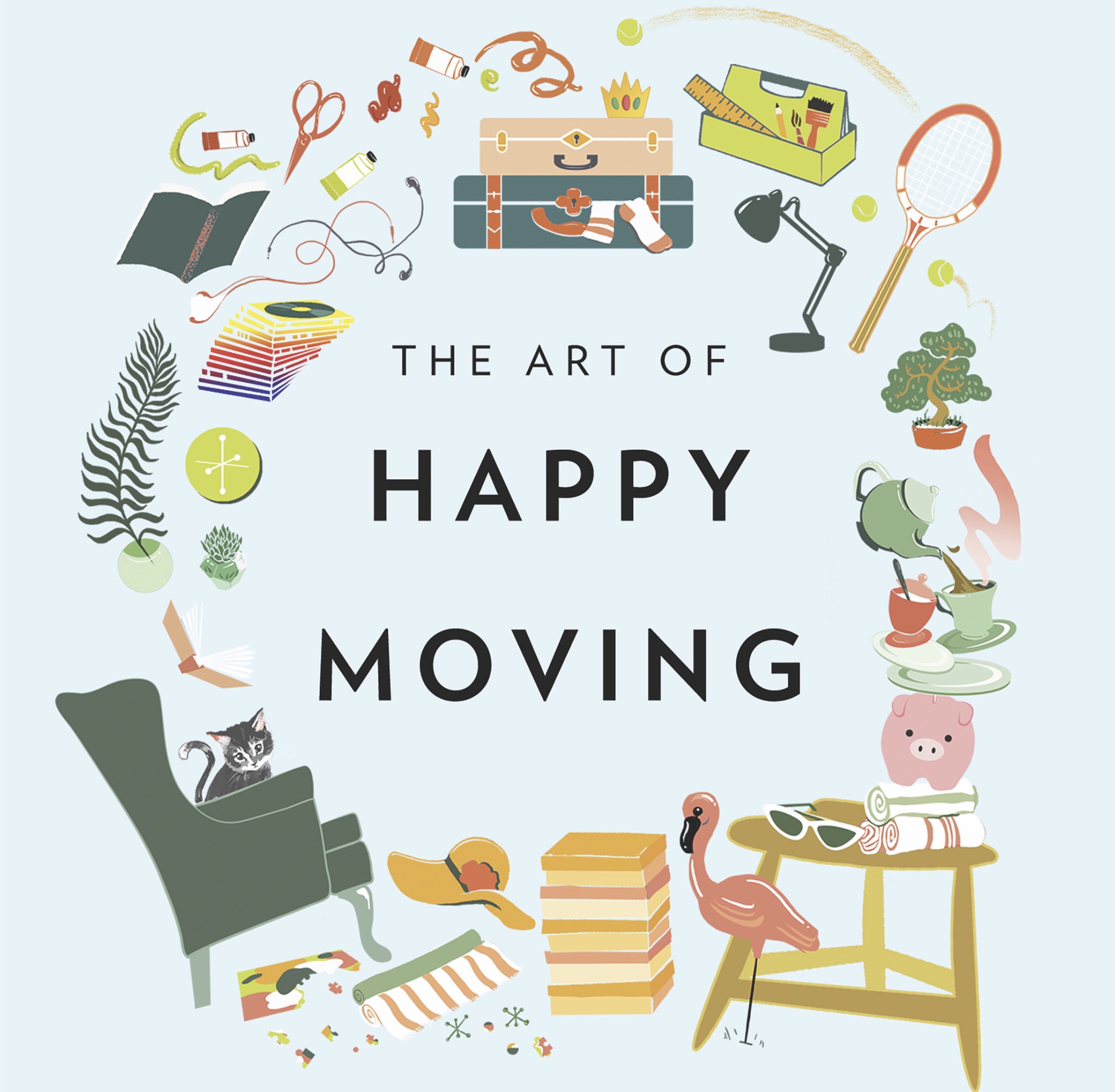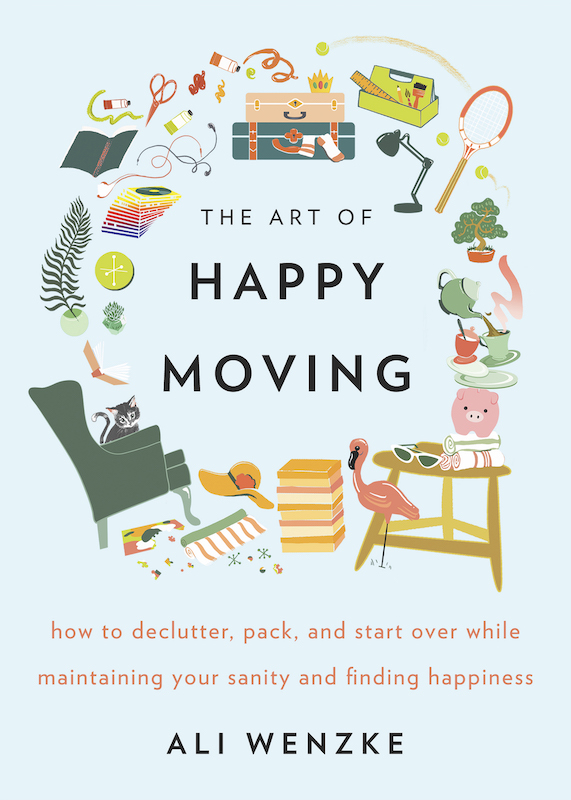
The Art of Happy Moving by Ali Wenzke
Ali Wenzke's The Art of Happy Moving is a comprehensive, upbeat guide to help you survive the moving process from start to finish, filled with fresh strategies and checklists for timing and supplies, choosing which items to toss and which to keep, determining the best place to live, saying farewell and looking forward to hello. You can order a copy HERE.
When we moved to Knoxville, I wanted to meet my new best friend right away. But after some trial and error, I learned that a few other steps come first. Before you can become friends with a stranger, you need to get to know her. If only I had known this before I invited myself to a Knoxville moms’ established playgroup. Friendship is a gradual process that starts with a smile or a hello. Some steps may be harder than others, but soon you’ll feel more comfortable using your body language to attract friends and you’ll be making small talk with everyone.
The Sneak Attack: 5 Easy Body Language Tips
If you follow a few basic rules of body language, you’ll quickly become a friend magnet. I call this technique the SNEAK attack—Smile. Neatness. Eye Contact. Arms Open. Kindness—mostly because I like cool acronyms. But also because it works.
When I talk about body language in my family seminars, the kids learn SEA instead of SNEAK. Why? For starters, neatness isn’t as important when you’re eight. Plus, kids know to be kind. It’s us grown-ups who forget sometimes. A simple “please,” “thank you,” and “excuse me” can go a long way. But I’m getting ahead of myself.
S IS FOR SMILE
As teenagers, my friends and I would spend hours in a novelty store called Sparkle Plenty. It sold fuzzy pens, funky alarm clocks, and T-shirts with life-altering advice. One T-shirt read, “Smile. It makes people wonder what you’re thinking about.” Not one to pass up words of wisdom from a T-shirt, I started to smile for no apparent reason. And it worked like a charm. Sure, I got funny looks on occasion, but for the most part, I would get a smile in return.
That’s the thing about smiles. They’re magical . . . lucky charms if you will, and the benefits of smiling cannot be disputed.
- Smiling releases feel-good chemicals such as dopamine, endorphins, and serotonin into your brain, which makes you feel happier.
- When you smile, it makes other people happier because it gives them a sense of familiarity and connection.
- Smiles are contagious. Your smile will get you a smile in return.
- A smile shows you are friendly, making it more likely that people will want to be your friend.
Okay, so we all agree that smiles are good for you, your social life, and your aura. Most people are fine with smiling at people they know; it’s a whole other thing to smile at people you don’t. It’s okay if smiling at strangers doesn’t come naturally to you—you are putting yourself out there, sending a signal of openness (there’s a reason you don’t smile at two o’clock in the morning on a subway car), and giving people the chance to reject you by looking away or potentially judge you (What if they think I look crazy?). For these moments, a little practice can build your armor:
- Get in front of a mirror.
- Smile for the camera.
- Think of something that makes you laugh (cat videos, text autocorrects, your best friend, whatever you need).
- Let your smile spread slowly from your mouth to your eyes.
- Try out different smiles for that gorgeous face in the mirror.
Now that you’ve practiced at home, take it outside. However, not everyone will or should receive your top-notch smile. Give a small smile to a stranger you pass on the street and bust out the genuine smile for someone you’ve seen in your apartment complex that you’d like to get to know better.
N IS FOR NEAT
Dan and I do our fair share of home improvement projects, so I’ve gone out in public covered in paint on more than one occasion. (Always buy that extra gallon of paint. You’ll need it.) I’ve never made any friends during those outings and people keep their distance from me. As unfair as it may seem, people will judge you based on your appearance because it’s the only information they have available. So, keep it neat—at least while you’re in the making friends stage.
I don’t want to cramp your style, but keep in mind that certain aesthetics announce “Back off!” These include uncombed messy hair, sloppy makeup, dirty clothes, and T-shirts with offensive language. It’s important to recognize what your appearance says to others, especially if you’re sending out vibes you don’t intend to. Keeping it simple and clean will help make that good first impression.
E IS FOR EYE CONTACT
Remember Eric? He looked at the menu when he ordered instead of making eye contact with the barista. Eric seemed distracted, disinterested, or maybe even rude. That’s not the impression you want to give when you’re in the friend market. You want to appear engaged, interested, and friendly. It doesn’t matter whether you are ordering coffee or trying to strike up a conversation with someone at work—look the other person in the eye. If eye contact feels uncomfortable to you at first, it’s okay to look at the other person’s nose or between their eyes. She won’t be able to tell the difference.
A IS FOR ARMS OPEN
One way to publicize that you are open to meeting people is to keep your arms by your sides. When you cross your arms, you communicate anger or defensiveness. Even though I’m always freezing, I avoid crossing my arms to stay warm because I don’t want to give the wrong impression. Your body sends off negative signals when you cross your arms.
To keep your friend options open, literally keep yourself open. Stand with your feet shoulder-width apart, shoulders back, chin up, and arms by your sides. When you sit, maintain the same confident upper-body posture. The funny thing I’ve learned from people’s moving stories is that friendships happen in unexpected places. It doesn’t matter whether you are at the bus stop or at the post office—don’t cross your arms.
K IS FOR KINDNESS
In his monumental book, How to Win Friends and Influence People, Dale Carnegie sums up how to make new friends: “Don’t criticize, condemn, or complain.” When you’re moving, you should consider this instead: “Don’t criticize, compare, or complain.”
When Cindy moved from Los Angeles to Austin she complained about everything. She criticized the pace of life in Austin, the hairstylists, and the dining options. Cindy compared every woman she met to the friends she left back at home, thinking none of them matched up in the sophistication department. Cindy says, “It’s the worst thing I ever did. I know people thought I was such a witch.”
It didn’t take long for Cindy to realize that she needed to change if she wanted to be happy in Austin. “I opened my eyes,” says Cindy. “I looked around and these women were amazing: well read, well educated. It was my own snobbery that kept me from seeing that at first.” Cindy learned not to criticize, compare, or complain. Once she stopped her negative behavior, she started to make friends. She even met her friend soulmate, something Cindy never imagined could happen in her fifties.
Watch out for sabotaging snobbery. If you just moved from Washington, D.C., to Sarasota, Florida, no one wants to hear how much you miss the political action of D.C. If you move from New York to anywhere else, don’t complain about the lack of entertainment options or how you could never eat a bagel outside of the City. It doesn’t matter if you’re right. Yes, your old city may excel in one area that your new city does not. All that your neighbors will hear is criticism of their city and their homes.

From The Art of Happy Moving by Ali Wenzke. Copyright © 2019 by Ali Wenzke. Reprinted by permission of William Morrow, an imprint of HarperCollins Publishers.








